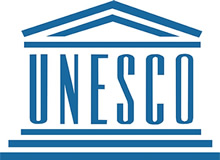In accordance with Rwanda’s goal of achieving middle income status by the year 2020, they officially partnered with Give One Get One NGO; to ensure all the children in public learning institutions have access to laptops. The reason for this program is to turn the landlocked country into a technology hub for east and central Africa as it has no viable natural resources. Currently 110,000 children learn on the laptops thanks to the One Laptop per Child Program. The government has further committed itself to inundate primary schools with 500,000 laptops over the next three years.
The program’s success can be attributed to the fact that the education ministry designed the syllabus and organizes workshops that help teachers understand it. As the saying goes “the mediocre teacher tells, the good teacher explains, the superior teacher demonstrates and the great teacher inspires.” This has been the corner stone of the program, as it would have been a failure if the teachers didn’t embrace it. Parents have also been involved through community meetings and parent-teacher groups.
We must ask ourselves, how practical is the program? Although Rwanda has made great strides towards achieving its goals – poverty is still an issue. With poverty comes insecurity. Initially the children were supposed to take the laptops home to do homework and further understand their capabilities however, because of the risk of them getting stolen they have to leave them at school. Despite this, some children have been able to sell the laptops to traders for just $10, while the government purchases them at $181. The child and their family see this $10 as an investment towards survival. Additionally the government pays the teachers $100 per month for their services. This is less than it costs for one laptop. How is a teacher supposed to teach using a tool that is considered more valuable than them? On top of this, the traditional language of instruction in Rwanda is French but because the laptops are programmed in English the whole system has to change. It puts a bigger burden on the teacher to learn the language as well as how to teach in it, yet their salaries are not increased. Is this really sustainable?
In conclusion I honestly think that the Rwandan government has done a commendable job in the implementation of the program. However certain key structures of the society need to be in place before it can really take off. These include security measures to ensure the laptops are not stolen when the children take them home, some sort of mechanism to stop children selling them, and a better appreciation to the teachers from the government. To quote the education minister “we usually throw ourselves in the water, while swimming we figure out how we’re going to do the last steps.”






